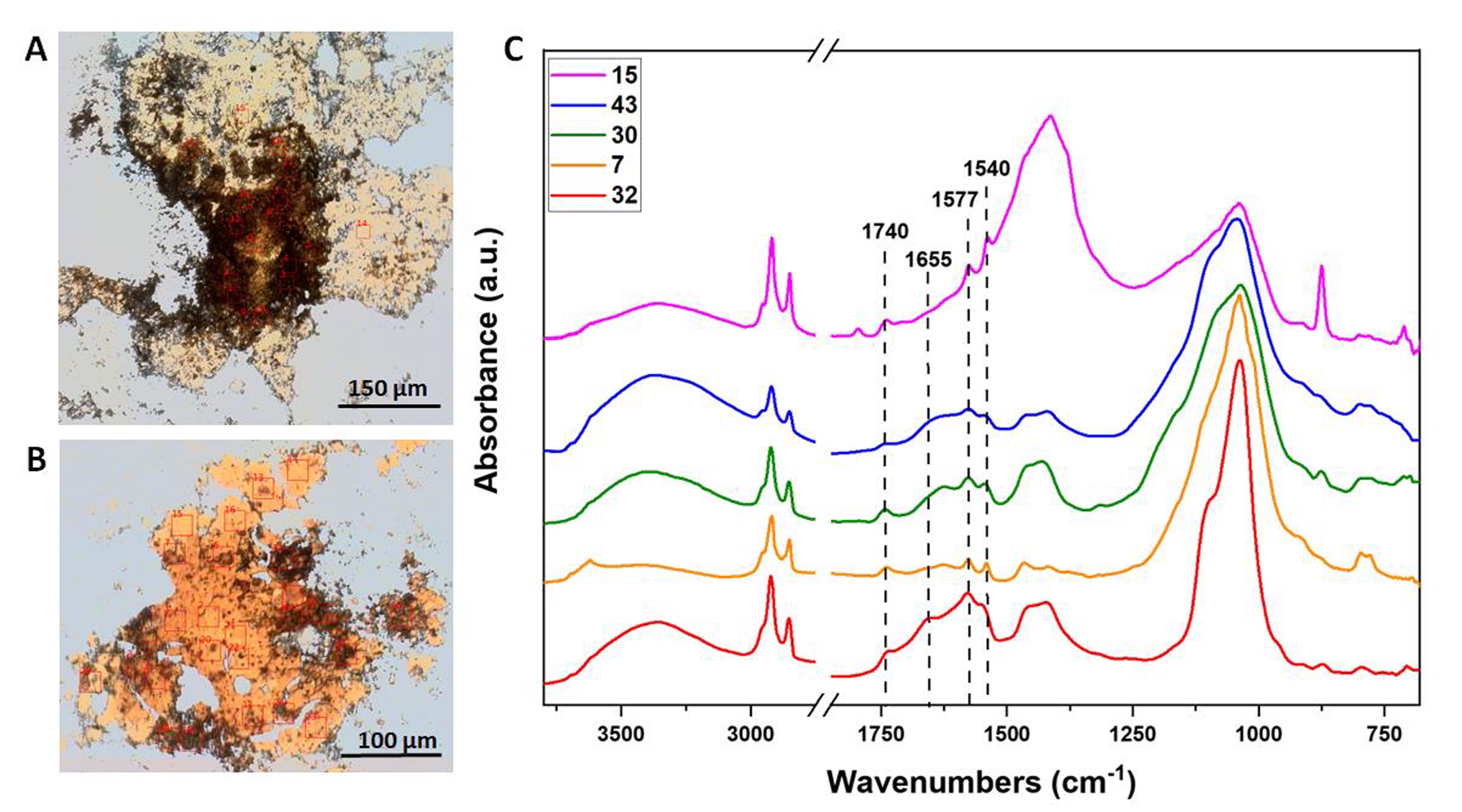New study identifies residues on Palaeolithic stone tools
|Advanced technologies based on synchrotron light can profoundly impact cultural heritage research, including the study of prehistoric finds. Infrared-based investigations, for instance, can help identify the presence of different types of organic residues, with the advantage of allowing the analysis of minute samples that cannot be characterised with any other method.
The CERIC funded PhD student Clarissa Dominici (University of Siena), in collaboration with Dr. Chiara Stani (CERIC), Dr. Matteo Rossini (University of Siena) and Dr. Lisa Vaccari (Elettra Sincrotrone Trieste), analysed samples of residues coming from seven stone tools dating about 19,000-18,000 years before present. The stone tools were retrieved from layer 9c2 of Grotta Paglicci (Rignano Garganico, Apulia, Italy), a key archaeological site for the Upper Palaeolithic in Mediterranean Europe. The infrared-based microscopy analyses carried out at the SISSI beamline at the Italian CERIC Partner Facility at Elettra synchrotron in Trieste allowed to highlight the presence of organic compounds mainly of animal origin, as well as soil particles from the burial environment. Among the former, the scientists widely identified the presence of adipocere, a wax-like compound that originates when bacteria degrade fat tissues in the absence of air, like in underground conditions.

Such finding suggests that the stone tools from Grotta Paglicci could have been employed in hunting as well as domestic activities, like butchering and/or hide working. Moreover, this study lays the foundation for designing specific protocols for synchrotron radiation-based infrared analyses on prehistoric finds.



